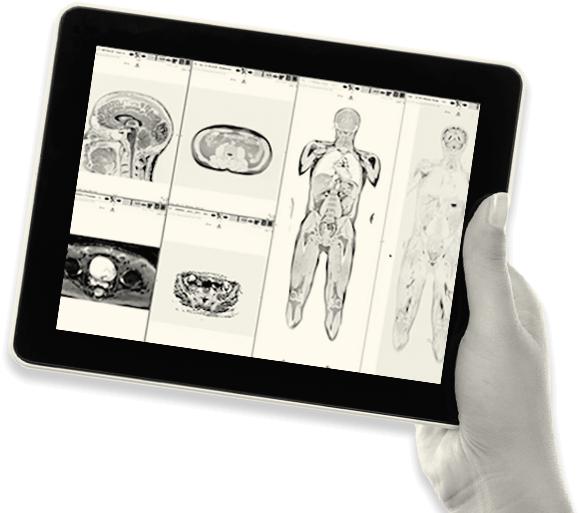THE NEXT FIVE
THE NEXT FIVE - EPISODE 28
Money Movers: Solving The Cross-Border Payment Problem
How money moves internationally compared to domestically






































The Next Five is the FT’s partner-supported podcast, exploring the future of industries through expert insights and thought-provoking discussions with host, Tom Parker. Each episode brings together leading voices to analyse the trends, innovations, challenges and opportunities shaping the next five years in business, geo politics, technology, health and lifestyle.
















Featured in this episode:
Tom Parker
Executive Producer & Presenter
Pratik Khowala
Global Head of Transfer Solutions, Mastercard
Emanuela Saccarola
Head of Cross-Border Payments, Citi
Josh Gordon-Blake
EVP and GM, MGO at Moneygram.
Despite an interconnected and increasingly digitalised world, a historical black cloud has been hanging over an area of finance relied upon by institutions, retail and a billion people associated with migrant work: Cross-border payments.
Domestic money transfer has seen a dramatic overhaul due to the digital revolution of recent years. But sending money internationally is a whole different ball game. Each country operates their own payment systems at varying levels of technological maturity and regulation. Due to this, historically, sending money has been both time consuming and costly, whether that is B2B, B2C or C2C.There has been improvements over the last few years, yet the industry still has some work to do. In this episode of The Next Five, Pratik Khowala, Global Head of Transfer Solutions at Mastercard discusses how scale and collaboration can solve some of the key challenges. Emanuela Saccarola, Head of Cross-Border Payments at Citi delves into the B2B landscape, echoes the need for industry collaboration and discusses the increasingly relevant role of digital assets. Josh Gordon-Blake, EVP and GM, MGO at Moneygram highlights the importance of remittances to the global economy and what an overhaul of the payments system can do for millions of people. Sources: FT resources, Deloitte, IFAD, World Bank, Mastercard, Deutsche Bank, ECB, FSB, The Payments Association.
This content is paid for by Mastercard and is produced in partnership with the Financial Times' Commercial Department.
READ TRANSCRIPT
- Finance
Transcript
Money Movers: Solving The Cross-Border Payment Problem
it's no surprise that sending money across borders has its challenges ideology is that we have to wonder countries in the world the more or less than about twenty thousand combinations and each combination has its challenges that the industry is making advancements to cater for a huge market estimated market size for twenty twenty four it's around a hundred and ninety five and it is projected to grow two hundred and ninety three by twenty thirty the pulse of the market in those remittances sending money to family in other countries the remarks today is estimated between six and seven hundred billion dollars it's moving annually Zacks in the formal market in the estimates of the informal market about double that so you've got easily over a trillion dollars moving on an annual basis the challenge is already to come it would create an economic advantage for millions of people if I look at one of the start published by you and just by bringing that cost down from the eighties to three percent one point four billion dollars a year in the hands of thirty six I'm Tom Harkin and welcome to the next five pub const %HESITATION to you by the F. T. punish Judea into series we asked industry experts about how the world will change in the next five years and the impact it will have on all day today in this episode we look at the future of cross border payments from historical in continuing challenges to the collective work being down to support the international movement of money quickly cheaply and quickly and safely despite ten in connected and increasingly digitalized world historical black cloud has been hanging over an area of finance relied upon by institutions retail and a billion people associated with migrant what cross border payments digitalisation is made international communication instant and quayside free yet transferring money across countries has struggled for phone too long to reduce associated costs and remove lengthy procedures domestic money transfers has seen a dramatic oval due to the digital revolution of recent years but sending money internationally is a whole different ballgame each country operates their own payment systems at varying levels of technological maturity and regulation due to this historically sending money has both been time consuming and costly whether it's B. two B. B. to C. we'll see to see that have been improvements over the last few years yet the industry still has some work to do so %HESITATION crossbody payments have improved significantly in the last let's say five to ten years this is a man whether Sakurada global head of cross border payments at city they are in fact faster more cost effective more transparent the more assessable we have made a lot of progress and it wouldn't be a good at understanding that there is no progress made up to this point that it wouldn't be fair to the industry and there's been a lot of competition conglomeration think that's destruction public sector entities collaboration as well but definitely there is a lot of work to do and I think generally when we think about cross border payments you would like to say cross border payments are just to the mask payments we've done effects in the middle but is not a simple because it is a key word cross border and when a payment goes cross border goes across the jurisdiction it goes across the regulatory framework set legal regimes that sometimes sanction implications are different if we have an FX there are capital controls a trade regulations and liquidity considerations up to guess very complex very fast and then a lot of people think about cross border payments on that one big block but the reality is that we have to wonder countries in the world more or less than about twenty thousand combinations and each combination has its challenges that is opposed to any desired features funk functionalities constraints that you have to look at each corridor and making a cross border payments they say from Hong Kong to Singapore might be very different than making a cross border payments from France to the US or UK to Kenya each of these they need to be considered individually so we have a lot of work to do because of the innovation and the progress has been a bit patchy and a little bit fragmented we probably have also with the innovation and disruption introduce a little be more complexity in cross border payments so we need to work as an industry to simplify and improve it and make it more accessible which is aligned with a G. twenty room up as well in November twenty twenty the G. twenty cents a pound the roadmap for enhancing cross border payments its aim is to increase financial inclusion and boost global economic crisis by creating more efficient payment system for cross border transactions to do so it must tackle four key areas cost speed accessibility and transparency challenges that are found in retail wholesale and remittance and there were just two years left to solve the challenges and hate roadmap targets in order to solve the challenges we need to do a few things this is Patty koala global head of transfer solutions for MasterCard first we need to create a reach you need to be able to reach the bank accounts you need to be able to reach cards you need to be able to reach wallets because in many countries wanted some becoming important and you need to reach to the cash or points I do want to emphasize Cashel points because in many of the emerging markets where most of the remittances land people are still on back so they need a way to cash that out to reach is the first thing I would say we need to solve for second I would say is we need to work tomorrow %HESITATION disinfection there are a lot of regulators which you need to go to I feel quite hopeful and ready excited about the fact that with the change in the technology and the advancement in the technology using AI using all the new technology advanced and we should be able to do is to far we should be able to add a line on the different regulations that government wants and we should be able to reduce the friction card one which is also equally important is user experience let me talk about in domestic violence and that it would make it very easy and cross border so twenty five eleven U. S. and if I have to send money to my doctor I go do my banking app type in her phone number and then phone number links it to her account number and I send the money and money teaches instantly in their account I can do that could phone number I can do that great email I can do with any other hand phone number email handle artist easy to remember rather than sometimes ten digit account number sixteen digit card number and I by number here it's easier done when it's a domestically because you're connecting or domestic history for granny how quickly can cross border and by should the expedient than to be having domestic ward is the experience that we want to bring in that cross border what so MasterCard is creating in areas based directory so that you can put the phone number of the recipient and then it brings back on number than the money gets there now I'll tell you that this problem cannot be solved just by us because MasterCard is in B. two B. two C. company which means we need to work with our partners to bring the last mile solution so that's how I believe that we can solve the cross borders a problem the G. twenty road map place to target that ninety percent of individuals including the unbanked have access to an electronic cross border remittance option for funds to be available within an hour and for the global average cost of sending two hundred dollars for medicines to be no more than three percent by twenty twenty seven currently well bank data puts the percentage of individuals at circa eighty percent only Hoff of services make funds available within an hour and in Q. two twenty twenty four the global average cost including cash and digital payments was it over double the target at six point six five percent as partake mentioned collaborations across financial institutions on helping us is the penetration of technology such as mobile phones allowing for digital wallets to secure admittance is even for the unbanked digital remittance while cheaper still average north of five percent in Q. two twenty twenty four despite this it remains popular for emerging economies subsaharan Africa accounts for two thirds of all mobile money transactions globally at a value of two point three billion dollars a day the remarks today is estimated between six and seven hundred billion dollars it's moving annually this is Josh Gordon Blake executive vice president and general manager M. G. O. U. at the money gram that's in the formal market and the estimates of the informal market about double that so you've got easily over a trillion dollars moving on an annual basis it's all over the world primarily from developed countries to less developed countries but even within countries you can have what about cities and in rural areas so that's kind of the sense the market over eighty percent of our transactions are sent for immediate use and consumption on the receive side forty five percent for daily for sustenance living a good portion of it dish all for medical bills so really remittances are a lifeline and something that is an option yeah we saw during the pandemic for example where there is so much worry about where people's income come from and remittance volumes actually spiked so you would think that at that moment where Pete was locked down some people couldn't go out of their homes that remains volumes of fall and the opposite happened because well there was the need and the worry on the send side it was even greater on the receipts side and so that was a tell tell sign of of sort of what we had and that it's an essential item so that's the intimate place that we have in our customers lives and it did the obligation that we take incredibly seriously at MoneyGram to make sure that money is arriving for low cost respostas possible according to the international fund for agricultural development over fifty percent of remittances sent to rural areas where seventy five percent of the world's poorest live and more than eighty countries rely on remittance for three percent of the GDP a better cross border payment landscape would transform a major area of social economic growth for millions of people globally but also the wider economy today while the G. twenty is a gore to bring the cost of cross border payment for a two hundred dollar transaction down to three percent currently it's still at six and six and a half percent but this is average in many markets this cost is as high as W. H. so if I look at one of the start published by you and just by bringing that cost down from the eighties to three percent one point four billion dollars a year in the hands of dirty secret what can you do it can one improve their life second it will improve their spending power and expanding our economy is a football so it becomes a virtuous cycle ran by bringing the cost down you're making people more efficient you are making done us more efficient and that it's continuous if I look at the estimated market size for twenty twenty four it's around a hundred and ninety five three and it is projected to grow to two hundred ninety three by twenty thirty so it's huge for market size perspective and it's growing fast with the globalization with the supply chain which is normal domestic it's all cross border so there is a lot of potential for this market to keep growing in coming future every country imports and exports coats and given the consumer demands for the best this trend continues to emerge and evolve and excellent it that's on the demand side but what is going to accelerate the demand is the solution that cross border seamlessness speak will be great if I give you just one example to date it for take payment takes three or four days about to happen a small SME in a country cannot have that liquidity to take Iraq three four days to supply goods nidec prepayment happening the same day they can produce more they can supply more so that is also going to propel the demand so there is a secular change happening which is pushing up the demand Burke all the technological innovation that is happening to make the cross border seamless same as domestic payments is going to for the problem that what are you paying individuals %HESITATION your business paying a business similar challenges exist when it comes to speed cooperation between systems and liquidity so I would say in the business to business flow and also maybe business to consumer where I think it's still a business initiating a transaction there are different requirements and different client needs that and maybe the business to consumer a little closer to the remittance consumer to consumer because this is where the innovation and the demands of a beneficiary are very important the verses in the business of business hello %HESITATION which have been around for a long time and just for maybe just definition is where a business is paying a vendor which is another entity another corporate or they can be making payments that are inter company sounding sounding their subsidiaries around the world or they could be making payments to a government which is not another business buddies that I mean to Tennessee to shop for tax reasons to descend to be high value payments set and although all kinds of looking for cost effectiveness that looking for transparency and speed %HESITATION maybe in the business to business slow in use cases that speed might be not necessarily he spent it might be enough to be able to deliver that transaction same day and a lot of considerations are in the liquidity management space of because the corporate treasurer wants to hold on to their liquidity as long as possible so it's very important for them the duties that predictability in that and that transaction back when they actually issue arises and the land and inspected by due date so it's more around making sure that everything happens at S. as expected so they can do they are forecasting what effectively rather than having that transaction required in seconds maybe seconds is not quite as important but they need to be cost effective so cheaper they need to be transparent and also generally I think there is a lot more attention on for all that because the sun's actually hired by you and that straw is one of the elements that that is growing nine one of the aspen that he's going in the world of cross border payments of payments in general over the last decade the gig economy and the creator economy has boomed the latter of which is worth two hundred and fifty billion dollars as of twenty twenty four creating a need for faster more reliable and seamless payment options in the business of consumer flows I think they he are very vocal so these are also use cases that have been around for a long time for example a payroll when a corporate Despain employees around the world or pensions when a company Spain social benefits but there are a lot of use cases that are emerging in particular in connection with the economy and that those are payments to taxi drivers payments to merchants are selling on marketplaces payment set to host of that are listing their properties that they need to up the veil of pairs so or two tours that they're providing grinds online and the use cases here are very similar to the remittance and the beneficiary the payment the key that is our season the payment that %HESITATION I'm actually looking for real time on demand twenty four seven and our clients that are making these payments are very quickly realizing that if the payment experience it is not seamless is not on demand that is not cheap but it's not cost effective they might not shocked the two tower or the taxi drivers to their platform so they blur there is a very blurry line between customer and update and those are a very similar experience so they individual to individual the consumer to consumer flow is that %HESITATION that I'm already struck that because the client needs have evolved significantly and that's where most of the collaboration that we seen the indices is actually happening where for example is a CT we have a proprietary network but we're complementing that with partnership with what we call payments facilitators that and one of the recent collaboration we have announced it last October twenty twenty four is a collaboration with MasterCard and that collaboration that was aimed at solving for this client needs at that are in particular in the business to consumer they can be used also for business to business but their response more two they use cases that I described as a disk is this forum and business to consumer where the consumer at the B. is an individual so the collaboration is enabling our clients to to make cross border payments and cross currency payments up from sixty five markets %HESITATION so clients are domiciled in sixty five countries that already attention engine before dissolution into fourteen markets and make payments are running through the Kerr network massacre network they landed into on account of but they leverage a debit card number there twenty four seven and close to real time and they can be initiated on the Manda subject took their request of IP blockchain can also automate complexities combat fooled increase reliability and often need instantaneous settlements for businesses and in tools so we could not be more bullish on stable Collins at MoneyGram fully believing that they've got massive potential to lower the cost to be a component of lowering the cost of cross border remittances that we pass on our customers I think Z. there there are a couple elements that when you think about adding a easy way to think about what it takes to offer a great women's product is to look at your cost structure right is to say if you're helping customers who move money it's got to be instant it's got to be an easy experience and at that point you're competing on price so you're competing on price you have to understand cost structure the actual movement of funds is one of the four five pieces at our cost structure so you got the movement of money you've got compliance and regulatory risk and you've got actual on an offramp payouts so for us the stablecoin is a present day opportunity lowering that one that one element of those costs but he's not sort of a comprehensive solution if you see the other elements because stablecoin still has all of those other costs as well so that's why it's part of our our puzzle %HESITATION one of things that we're excited about what we work with us at twenty thirty forty different stable coin wallets today to help them with their on off ramp so part of our strategy for consumers using stable going to lower the cost for ourselves but part of our strategy also is to use our massive network of four hundred fifty thousand worldwide locations check the those on and off ramps for stable coin wallets that we can further lower the cost cost remains having a blockchain based infrastructure allows for the use of CBD sees the digital version of the country's fiat currency the can help streamline Cosell cross border payments by affording in Hans transparency and security to global trade and finance B. to be cross border payment solutions must be ready for the future as such digital currencies must be discussed in the same breath as traditional methods to offer individuals and businesses choice however technical interoperable its heat and regulatory difficulties of blockchain still need to be online down before it can help the cross border payments landscape so CDC our central bank digital currencies at and they are regulated and that they mirror read this fiat currencies because they are central bank money there are quite a lot of implications on the side they're regulated in terms all that sanctions and money laundering traceability but also CDC they're two different types of CVC one is the retail CVC which isn't meant to to be offered to the general public and then the whole sale CDCs which are relevant for interbank settlements and there are a few projects ongoing right now on C. C. one that is very important that that we are participating in this project our garage which is it a project where tokenize a commercial banks deposits and tokenizing central bank monies that are looking to operating that unified ledger to enable faster sentiments of cross border payments first probably same currency but ultimate cross currency and that would be an amazing revolutionary step but being that the world of cross border payments were sentimental happens it not always real time because that he could do to consideration already balanced by other types of digital assets that can maybe be a better level relevant into cross border payments space our token and CG house it is so can services because he don't consider this is what actually enabling clients to move a large amount of money in US dollar across our branch network some of the branches that enabled already and then there are other types of they have more consideration and some more challenges on date may be critical to Tony framework that are stable coins and crypto they also may have a role but there is a lot of work to do in the space of regulatory framework and some consideration on safety and soundness and how they can be deployed in a controlled fashion well they have been great improvements occurring over the last few years and cross border payments the next five years is where the final hurdles need to be overcome this money is going to be really exciting not every technology change is made equal in I every year brings the same pace of technology change but we are not to over load the buzz term of A. I. but we are in the A. I. H. N. we are seeing these use cases across our entire company this is an exciting time I would that means is you know if you were to make me sign up for where we're gonna be in two years I would be hard pressed that five years seems like actually is a lifetime away been really exciting way the ability to build a beautiful and functional mobile adhoc has gone down by eighty ninety percent from what it was maybe five years ago so the idea of building the technology the ease of use what which which was so crucial hard on so long ago now is really the the table stakes and that's why we're so bullish on the opportunities and not to talk our books so much which is something that we're excited about is the a lot of what's difficult now is getting licensing is having those endpoints and the right connection points that payments on the send and receive side and being able to handle S. Camille how can a the plants and so for us I think the real move next is how do you make the user experience easier and easier how can let users send without typing anything that using their voice these are the type of things that we're thinking about where is the idea that there is a border in between should start to melt away as we build out later on top so that it can obfuscate the issues that come across border make cross border as easy as domestic but at the end of the day all payments are local and you can't be local everywhere once so inherently you have to have great partnerships and that could be local partnerships with their cash retailer that is it near your mom's corner says that she can conveniently pick up the cash that she needs or that could be through a global payments player let for example we're launching partnership with MasterCard we've got a good deep relationship with them and it's something that you need to have those global their suit to really dramatically lower the cost of moving money and so if I had a good phrase my hope through cross border remittances in five years is that it's not a topic it's just moving money and whether you do it domestically internationally it feels the same the next five years in cross border payments I believe will be marked with significant gold innovation and collaboration I think if you think about the adoption of contactless payment in consumer report before court and look at after court it was transformational because there was a need and that need drove the demand and that any girl the end option so when I look at cross border there is a secular trend people are moving across the bill gets are going to study on over to the lord they don't want to really make it to their own country forest education and then print is happening across borders it's normal limit so there is a demand of making cross border seamless I personally believe education drives to societal change and today if I look at the fish and see that is driven by any education government what is not efficient I think driving efficiency in that will give peace of mind to the parents were sending money it thank the kids have one less worry rather than starting and ensuring that the money is coming to that or not that's one exact second example okay SME payments can take anywhere between three to five days to reach from a buy into a supplier SMEs work on day to day cash balance if you can reduce that liquidity needs by getting them money instead if they can produce more they can sell the produce modest sell more that price for the cross border it once people are used to not consume my expedience on domestic then expectation is cross border should behave same B. as domestic it nobody cares about the complication that industry needs to deliver it but the expectation is high so we have a demand side and you have an expectation site and that drives innovation with the technology advanced meant that we are seeing those innovations will become easier so put together I believe that we will see a significant and step change in bringing the seamlessness in the cross border payment in next five years actually five years is a long time I feel we will see a significant change every single year from now so I mean the north star for cross border payments and that the vision is really to have a much simpler ecosystem and globally consistent accessible cross border payments that are faster more cost effective more transparent and of course a very safe and sound that's the north star and ultimately we would like to be able to say that cross border payments are just two domestic payments to sometimes within the facts in the middle will this to happen in the next five years so %HESITATION probably not I would say I think we will still see a lot of fragmentation and a lot of complexity probably still being added in particular that went to new technology that is emerging as a key enabler the space with a digital asset stable coins that potentially crypto CVD seeds that artificial intelligence will have a role so all of that is probably going to have a role in the next five years more likely going to improve how we make cross border payments also adding complexity if I had a wish list I suppose of the many things that I would like to see in the space of cross border payments the first one would be more accessibility whereby cross border payments are assessable to everyone which means so that providers have to be able to access everything that is available domestically more consistency modernization so less fragmentation but more our monetization Sanders like ours %HESITATION sweep GPI more of those in need to come to play to provide a seamless experience that is consistent for all those twenty thousand quarters probably I would like to see a lot more collaboration in the property sector space and collaboration between public sector and government is very important to more conversions all sanctions are genes are very important because some show that had a lot of friction in the process that and then again the safety and soundness of the new technology this technology very powerful and he needs to be deployed safely and that one way to do that is to regulation unfortunately but it's important that regulatory frameworks are providing a space for new technology to be implemented but also that %HESITATION the reason the guardrails that are required in order to make sure that the financial systems are always safe and sound and stable so I think lastly I would say that if we can get to the point where all those things are happening we would be able to say that cross border payments are exactly like domestic payments but there's definitely a lot of work to do number rations on paramount's working together to seamlessly integrate technologies regulatory frameworks and left parts of the global population out of poverty and towards financial freedom is crucial the door to the success lies in a collective and equitable cross border payments landscape fueled by technology is an area that is innovating and in the future we will be discussing cross border payments in the way they are now we went be longing for cross border to be like domestic it will be seamless today's problems won't be an issue in the future instead it will fuel a growing global economy putting cash in the pockets of individuals and allowing businesses to hold greater liquidity whether that is a reality within five years is up for debate but we seeing industry collaboration successfully solving challenges but now they need to be more private public collaborations to fuel the Farah and foster future the international finance if money makes the world go round we need to help money go round the world






